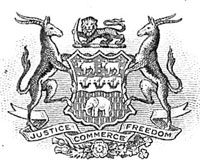This Day in History: October 15, 1889
Additional Date: October 15, 1889
South Africa effectively became a British colony in 1795. This led to great number of changes, such as the expansion into the interior of South Africa and the discovery of gold and diamonds. By the mid-nineteenth century, the mining industry was well established, particularly under the leadership of Cecil John Rhodes, a politician and mining magnate, who sought to further the influence of the British Empire over the African continent. A royal charter was sought to establish a company, based on the British East India model (BEIC), in which this goal could be achieved.
On 15 October 1889, Queen Victoria issued such a charter, and the British South Africa Company (BSAC) was established. Trade was undertaken with various African leaders, often unscrupulously, in which vast amounts of land were acquired. The BSAC recruited its own army, which it used to defeat the Matabele and to establish a colony, later known as Rhodesia (Zimbabwe). The charter was extended to 1914, but was eventually revoked in 1923 as the White settlers in Southern Rhodesia grew tired of company administration.
Shares of the BSAC were eventually consolidated in various mining companies, one of which is Anglo American.
